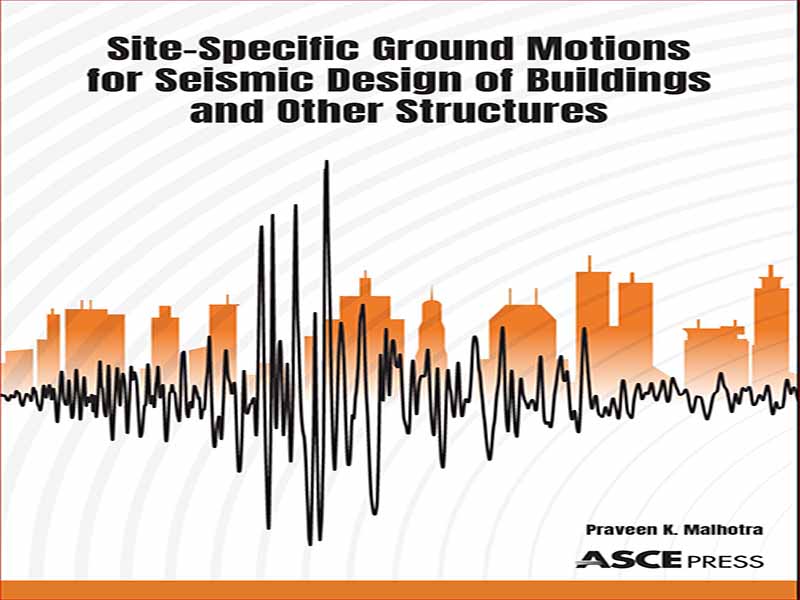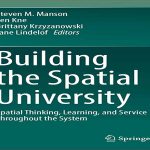- عنوان: Site Specific Ground Motions for Seismic Design of Buildings and Other Structures
- نویسنده: Praveen K. Malhotra
- حوزه: صنعت ساختمان
- سال انتشار: 2022
- تعداد صفحه: 136
- زبان اصلی انگلیسی
- نوع فایل: pdf
- حجم فایل: 12.4 مگابایت
در هنگام وقوع زلزله، زمین در همه جهات می لرزد. اینرسی سازه ها از حرکت هماهنگ با زمین جلوگیری می کند. سازه ها تغییر شکل داده و تنش ایجاد می کنند. مهندسان طراح به حرکات زمینی نیاز دارند که در طول عمر سازه ها رخ دهد. ASCE 7 (2017a) حرکات زمینی طراحی لرزه ای را برای تمام سازه ها در ایالات متحده به جز نیروگاه های هسته ای، سدهای بزرگ، خطوط لوله، پل ها و مخازن گاز طبیعی مایع (LNG) تجویز می کند. پیشبینیهای اولیه حرکات زمین «قطعی» بود. زمین شناسان اندازه (قدرت) و محل زلزله هایی را که می تواند در طول عمر یک سازه رخ دهد، پیش بینی کردند. زلزله شناسان “بدترین حالت” حرکات زمین را که توسط این زمین لرزه ها ایجاد می شود، پیش بینی کردند. حرکات زمین پیش بینی شده توسط تجزیه و تحلیل قطعی نام های مبهم مانند حداکثر اعتبار، حداکثر احتمال، یا حداکثر قابل پیش بینی داده شد. در زمان مناسب، زمین شناسان متوجه شدند که زمان، مکان و بزرگی زمین لرزه های آینده بسیار نامشخص است و نمی توان آنها را به طور قابل اعتماد تعیین کرد. لرزه شناسان دریافتند که حرکات زمین ناشی از زمین لرزه های خاص نیز بسیار نامشخص است و “بدترین حالت” حرکات زمین را نمی توان به طور قابل اعتماد تعیین کرد. بنابراین، حرکات زمین پیشبینیشده توسط تحلیل قطعی «حداکثر» نبودند. در طول عمر یک سازه می توان از آنها تجاوز کرد، اما احتمال بیش از حد ناشناخته بود. اصطلاحات قطعی مانند حداکثر اعتبار، حداکثر احتمال یا حداکثر قابل پیش بینی هیچ معنایی نداشتند. یک تحلیل احتمالی (Esteva 1970، Cornell 1971، Reiter 1991، McGuire 2004) برای تعیین معنی به حرکات زمین پیش بینی شده مورد نیاز بود.
During an earthquake, the ground shakes in all directions. Inertia of structures prevents them from moving in unison with the ground. Structures deform and develop stresses. Design engineers need ground motions that could occur during the life of structures. ASCE 7 (2017a) prescribes seismic design ground motions for all structures in the United States except nuclear power plants, large dams, pipelines, bridges, and liquefied natural gas (LNG) tanks. Early predictions of ground motions were “deterministic.” Geologists predicted the size (magnitude) and location of earthquakes that could occur during the life of a structure. Seismologists predicted the “worst case” ground motions produced by these earthquakes. Ground motions predicted by deterministic analysis were given vague names such as maximum credible, maximum probable, or maximum foreseeable. In due course, geologists realized that the time, location, and magnitude of future earthquakes are highly uncertain, and they cannot be reliably determined. Seismologists realized that the ground motions produced by specific earthquakes are also highly uncertain and that the “worst case” ground motions cannot be reliably determined. Therefore, the ground motions predicted by deterministic analysis were not “maximum”; they could be exceeded during the life of a structure, but the probability of exceedance was unknown. Deterministic terms such as maximum credible, maximum probable, or maximum foreseeable did not have any meaning. A probabilistic analysis (Esteva 1970, Cornell 1971, Reiter 1991, McGuire 2004) was needed to assign meaning to the predicted ground motions.
این کتاب را میتوانید بصورت رایگان از لینک زیر دانلود نمایید.
Download: Site Specific Ground Motions for Seismic Design of Buildings and Other Structures
































نظرات کاربران